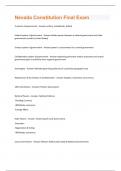H1: LOWER URINARY TRACT SYMPTOMS (Van der Aa)
1.1 Algemeen
1.1.1 Man: blaas – prostaat – urethra
Vrouw: blaas - urethra
1.2 Anamnese
1.2.1 Moeite met ophouden? = vullingssymptomen
1.2.1.1 Overdag vaak plassen? Hoe vaak? toegenomen mictiefrequentie overdag
1.2.1.2 ’s nachts opstaan om te plassen? nycturie
1.2.1.3 Als u voelt dat u moet plassen, moet u dan onmiddellijk gaan? urgency, urine incontinentie
1.2.2 Moeite met plassen? = ledigingssymptomen
1.2.2.1 Hesitatie (ik moet gaan, maar het komt niet, even wachten en dan wel)
1.2.2.2 Onderbroken staal (plassen stoppen plassen…)
1.2.2.3 Zwakke straal (plas je op uw schoenen of kan je nog over de beek plassen? :P)
1.2.2.4 Sproeien
1.2.2.5 Persen voor op gang te komen
1.2.2.6 Eind-druppelen (lange eindfase, straal neemt af tot druppelen)
1.2.3 Klachten net na het plassen? = post-mictiesymptomen
1.2.3.1 Gevoel blaas niet leeg
1.2.3.2 Nadruppelen: meteen na mictie, meestal na verlaten toilet
1.2.4 Hoofdklacht uitdiepen: plasvolumes, opvangmateriaal (welk, hoeveel…), straal, hesitatie, pijn, hematurie, hoelang
duren de klachten, waarom komt u nu, oedemen, medicatie, drinkgedrag, bij stress/continu, locatie pijn, uitstraling,
seksuele anamnese en stoelgangsanamnese
1.2.5 Alarmsymptomen: hematurie, pijn doorsturen, want ≠ LUTS
1.2.5.1 Pijnloze, macroscopische hematurie = TCC (transitioneel celcarcinoma) = blaastumor tot tegendeel bewezen
is. Kan evolueren nr invasieve blaaskanker = mogelijks dodelijk
1.2.5.2 Andere DD: urineweginfectie, nierkoliek obv uretersteen, blaassteen
1.3 Types urinaire incontinentie
1.3.1 Urgency incontinentie (aandrang): voelen dat ze moeten plassen en kunnen niet ophouden
1.3.1.1 Angst/gevoel te laat gaan komen, activiteiten stoppen om te plassen, stoppen met tv kijken, in cinema nr
buiten lopen, typisch frequency en gevoel van onvolledige mictie
1.3.1.2 Overgewicht, roken, constipatie, drank-inname (bv. 5L/dag)
1.3.2 Stress incontinentie: fysische stress (valsalva gerelateerde) incontinentie
1.3.2.1 Verlies bij hoesten, heffen, niezen, lachen (plotse drukverhoging drupjesverlies)
1.3.2.2 Geen verlies bij rustig in zetel zitten, geen verlies ’s nachts of bij weinig activiteit
1.3.2.3 Obstetrische VG (ZS, bevallingen), vrouwen > mannen, ↑ met ouderdom (vnl post-menopauzaal),
overgewicht, genetisch, prolaps, langbestaand (voorspelbaar, bv. benen kruisen)
1.3.3 Gemengde incontinentie: stress + urgency incontinentie
1.3.3.1 De dominante klacht eerst behandelen (anamnestisch te weten komen)
1.3.3.2 Komen vaak sneller nr de arts voor urgency incontinentie
1.3.4 Continue incontinentie/(overloop): ik verlies dag en nacht kleine beetjes, continu
1.3.4.1 Het drupt continu
1.3.4.2 Bij fistel (bv. vesico-vaginale fistel) bv. na hysterectomie
1.3.4.3 Bij overloop-incontinentie (vnl. bij oudere man of bij BPH): blaasV ↑ drupt continu
1.4 Klinisch onderzoek
1.4.1 Man
1.4.1.1 Suprapubisch palperen + percussie
1.4.1.2 Externe genitalia inspectie
1
, 1.4.1.3 Perineum/OL (normaal gevoel? Oedeem?)
1.4.1.4 PPA (belangrijk om toch te doen, veel huisartsen doen dat niet)
1.4.1.5 Doel: Globus? Afmeting? Prostaatkanker? Neurologische afwijkingen?
Globus Liesbreuk Fimosis
1.4.2 Vrouw
1.4.2.1 Suprapubisch palperen + percussie
1.4.2.2 Gynaecologische houding
1.4.2.2.1 Inspectie externe genitalia: atrofie?
1.4.2.2.2 Persen/hoesten: urineverlies? urethrale hypermobiliteit? verzakking?
onderzoeken met gevulde blaas
urethrale hypermobiliteit: veel vrouwen ontwikkelen stress-incontinentie,
sluitspier slaagt er niet in urethra dicht te duwen op moment dat er
drukverhoging is, urine vliegt nr voor en nr boven
1.4.2.2.3 Bekkenbodemkracht/proprioceptie ( indien niet goed: kiné kan al veel helpen)
1.4.2.3 Perineum/OL
Caruncula urethrae Episiotomie/obstetrisch litteken
Cystocoele Rectocoele
2
, 1.5 Bijkomende onderzoeken: welke info zal/kan therapie veranderen? (bevestigen/ontkrachten werkdiagnose)
1.5.1 Plasdagboek/mictiedagboek
1.5.1.1 Vochtinname, frequentie, mictievolume, 24u-urineproductie
1.5.1.2 Pijn? Verlies? Aandrang? Activiteit?
1.5.1.3 Vnl bij vullingssymptomen, nycturie, onduidelijke anamnese
1.5.2 Urine onderzoek
1.5.2.1 Dipstick (meestal): infectie? Hematurie?
- pH: lithiasis
- leukocyten esterasen, nietrieten: infectie
- Hb: hematurie
- proteïnurie, glucosurie
1.5.2.2 Microscopie: RBC (# + morfologie), WBC, epitheelcellen, bacteriën, kristallen…
1.5.2.3 Cultuur: bevestiging infectie indien dipstick/microscopie positief
- bij verdenking urineweginfecties kijken nr significante bact. groei (> 105 CFU/ml)
- identificatie oorzakelijk kiem + AB-resistentie-profiel
- urine: midstream vs sondage vs suprapubische punctie
1.5.2.4 gemakkelijk, eenvoudig, goedkoop, brede consensus
1.5.3 Bloedname
1.5.3.1 Ureum, creatinine = nierfunctie (↓ pas heel laat + interactie met spiermassa)
1.5.3.2 Ionogram
1.5.3.3 Specifieke tests (bv. PSA bepaalde waarde bij prostaatkanker, PSA ~ grootte prostaat)
1.5.3.4 Niet routine nodig
1.5.4 Uroflowmetrie/urodynamisch onderzoek
1.5.4.1 Uroflowmetrie: plassen in emmertje: kracht van straal + resturine meten (= postmictioneel urine)
1.5.4.2 Urodynamica: druk in blaas meten
1.5.5 Echo
1.5.5.1 TREP (transrectale echografie prostaat): prostaatvolume
- voor chirurgie
- overweging geven 5-ARIs (= medicatie)
1.5.5.2 Andere beeldvorming: gebaseerd op symptomen of voor specifieke therapieën
1.5.6 Cystoscopie: bij hematurie, vermoeden urethrastrictuur, blaashalsstenose…
Tot hier les 1 Van der Aa
3











